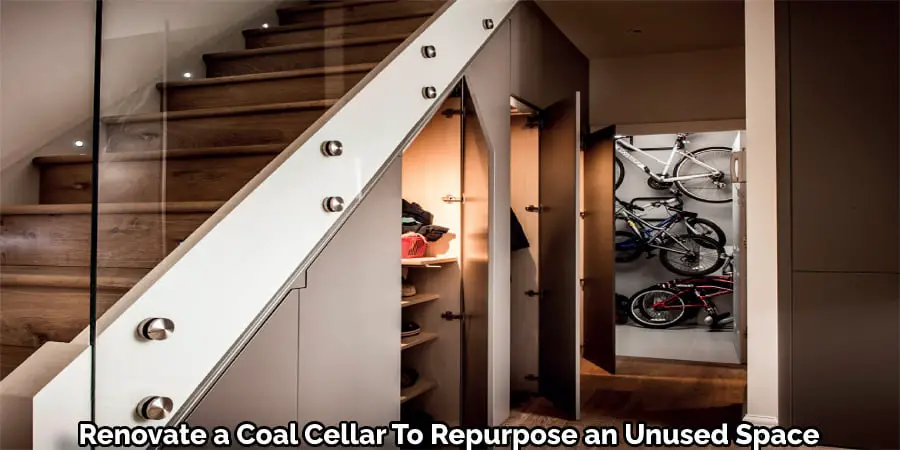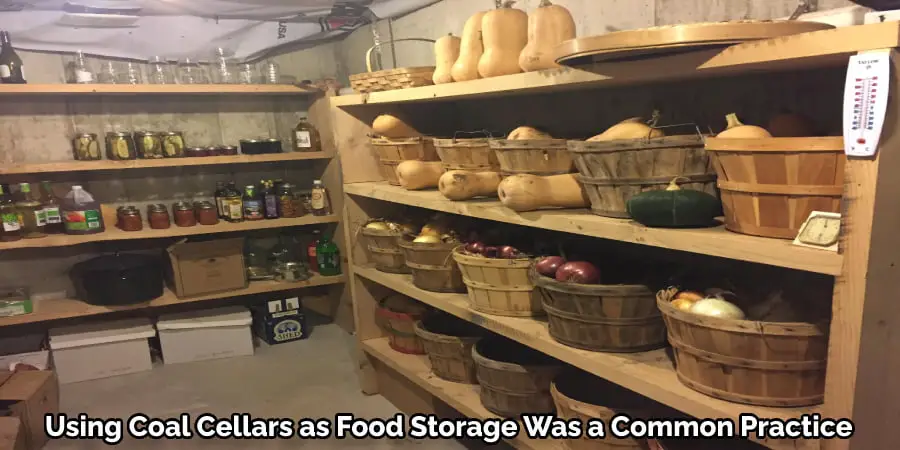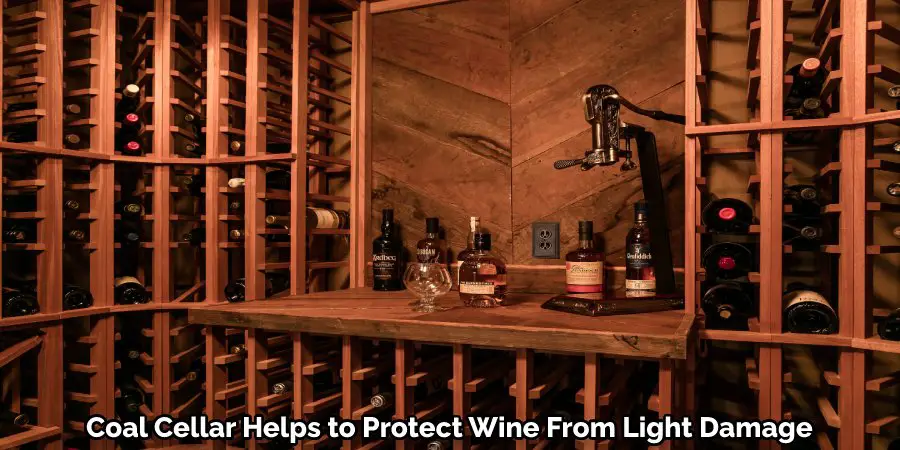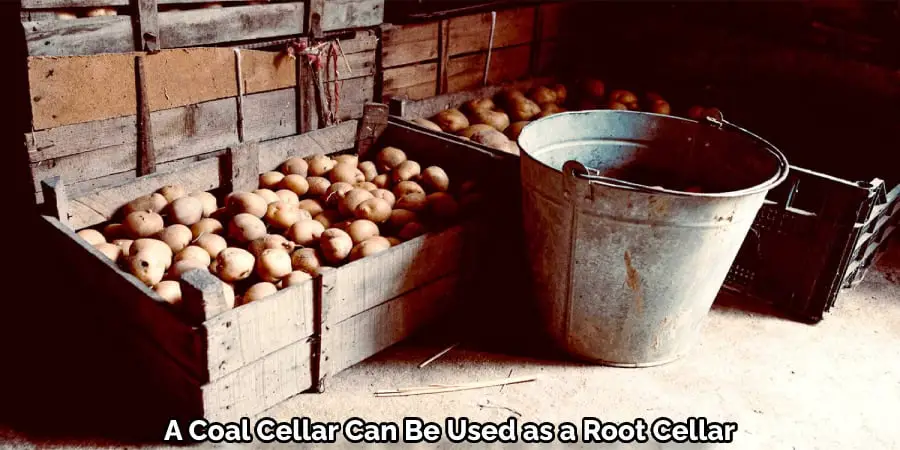When most people think about coal cellars, they imagine a dark and dreary place where coal was once stored to heat homes. But what many people don’t know is that these spaces can be transformed into something extraordinary- a wine cellar. Here are a few tips on how to make the most of an old coal cellar.

What is a Coal Cellar?
A coal cellar is a room or space in a house, typically in the basement, where coal is stored. Coal is used to heat the home and cook food. Coal cellars were once typical, but they are now rare because most people use natural gas or electric heating instead of coal.

Planning:
This project aims to renovate a coal cellar to create additional living space. The coal cellar is in poor condition and will require significant work to be habitable. However, the finished product could be a great addition to the home. The project will require careful planning and execution to be successful.
How to Clean and Prepare an Old Coal Cellar for Use?
Cellars are often used for storage, but what happens when you don’t have enough storage space and the weather is too hot or cold to store items outside? A coal cellar can be the answer to your storage needs. Coal cellars were traditionally used to store coal, but they could be used for anything from food to wine. If you have an old coal cellar that you’d like to use, here’s how to clean and prepare it.
The first step in cleaning and preparing an old coal cellar for use is to remove any debris or waste that may be present. Next, the walls and floor should be scrubbed clean. If the coal cellar is to be used for storage, it is crucial to ensure that it is properly sealed off from the elements. Finally, if necessary, the space can be lined with insulation to keep it warm.
How to Evaluate Your Coal Cellar?
When evaluating your coal cellar, you’ll want to consider the following:
- The condition of the coal cellar
- The age of the coal cellar
- Its size of the coal cellar
You’ll also want to look at features such as the roof, walls, and floor of the coal cellar. Additionally, you’ll want to evaluate how accessible the coal cellar is and how much storage space is available. Finally, you’ll need to consider the cost of maintaining your coal cellar.
How Do I Renovate My Coal Cellar?
It’s no secret that coal is on its way out. The days of having a coal cellar in your house are dwindling, but if you already have one, what do you do? Coal cellars were once a mainstay in many homes because they provided a place to store coal for heating. Now, those cellars can be renovated into something useful and stylish. Here are a few ideas for how to renovate your coal cellar.
The first step in renovating your coal cellar is to identify what specific tasks need to be completed. This may include cleaning the space, repairing any damage, and installing new shelving or storage units.
Once you plan, you can procure the necessary materials and tools. Be sure to budget enough time for the project, as it may take longer than expected. Finally, follow all safety precautions when working with coal and other combustible materials.

How to Make the Most of an Old Coal Cellar:
Once you have evaluated your coal cellar, it’s time to start planning how to make the most of the coal seller.
Ideas for Using a Coal Cellar
Food Storage:
The use of coal cellars as food storage was a common practice in the early days of America. Coal cellars were dark, calm, and dry places that were naturally insulated, which made them perfect for storing food. They also had a steady airflow, which helped to keep food cool and fresh. In addition, coal cellars were often located near the kitchen, which made it easy to access food when needed.

Wine Storage:
Using a coal cellar as wine storage is an excellent way to maintain wine’s ideal temperature and humidity. By storing wine in a coal cellar, you are taking advantage of the natural coolness and moisture in these spaces. In addition, a coal cellar is typically dark, which helps protect wine from light damage.

Root Cellar
A coal cellar can be used as a root cellar. A coal cellar is a room or space in a house where coal is stored. However, the term can also be used to describe a general room or area used for storage. In this case, a coal cellar could be used as a root cellar because it is cool and dark.

Beer Storage
Using a coal cellar as beer storage is an ingenious way to keep the beer cool and fresh. The stable, cool temperature of a coal cellar is the perfect environment for storing beer, and the thick walls of the cellar help to keep the cold in. Additionally, the darkness of a coal cellar is ideal for preserving beer.
Temperature Control
A coal cellar can be used to help control the temperature in a house. By using the natural insulation of the coal cellar and by closing off any openings to the outside, the temperature in the house can be more easily controlled. The coal cellar can also be used to store coal for heating the house in the winter.
Decor
There are a few different ways to use a coal cellar as decor. From a functional perspective, it is essential to note that a coal cellar was initially built as a storage space for coal. In this sense, using the coal cellar as decor can be seen as an effort to repurpose an unused space in the home. Additionally, from a historical perspective, using a coal cellar as decor can help to create an authentic period atmosphere in the home.
Conclusion
In conclusion, if you have an old coal cellar in your home, there are many ways to make the most of it. You can use it for storage, a wine cellar, or even a home office. Using your imagination and creativity, you can turn this old space into something functional and beautiful. So don’t let that coal cellar go to waste—start using it today!
Frequently Asked Related Questions
How to Evaluate Your Coal Cellar
There are a few ways to waterproof a coal cellar. The most common way is to apply a coat of tar to the surface of the walls and floor. You can also use a waterproof sealant on the surface of the walls and floor. Another way to waterproof a coal cellar is to install a drainage system on the floor. This will help keep the floor’s surface dry and prevent water from seeping into the coal cellar.
How Do You Waterproof a Coal Cellar?
There are a few ways to waterproof a coal cellar. The most common way is to apply a coat of tar to the surface of the walls and floor. You can also use a waterproof sealant on the surface of the walls and floor. Another way to waterproof a coal cellar is to install a drainage system on the floor. This will help keep the floor’s surface dry and prevent water from seeping into the coal cellar.
How Does a Coal Cellar Work?
A coal cellar is a type of storage area used to store coal. The coal is typically stored in bulk, and Coal cells work by using the natural airflow within the building to draw air in from the bottom of the cellar and up through the coal pile. This air is then heated as it passes through the coal, which causes the coal to ignite. The hot air then rises up and out of the building, which helps to heat the building.
What is the Ideal Temperature of a Coal Cellar?
The temperature of a coal cellar is the temperature at which the coal in the cellar will burn. The ideal temperature for a coal cellar is around 50 degrees Fahrenheit (ca. 10 °C), allowing the coal to burn slowly and release heat into the room. If the temperature is too high, the coal will ignite and release heat quickly, which can be dangerous. The coal will not produce enough heat if the temperature is too low.
Does a Coal Cellar Need Ventilation?
A coal cellar needs ventilation to allow air to circulate and remove gases and pollutants created by the burning of coal. Without proper ventilation, these gases and pollutants can accumulate in the cellar and cause health problems for the people who live or work in the building.
How Deep is a Coal Cellar?
The depth of a coal cellar is typically determined by the depth of coal seams in the area. Coal seams are found at different depths depending on the location, so a coal cellar in one place may not be as deep in another. Coal cellars are around 10 feet (ca. 3 m) deep, but they can be deeper or shallower, depending on the situation.
Other Useful Resources That You May Want to Check Out
How to Hide Radon Pipe in Basement
